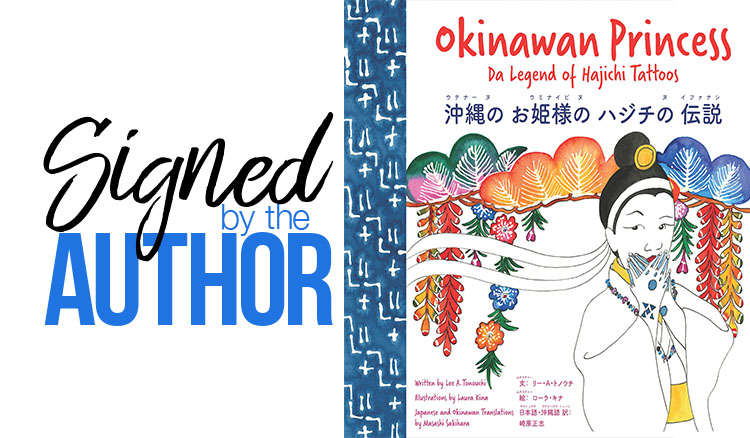 (Illustraion by Laura Kina)
(Illustraion by Laura Kina)
Illustrated by: Laura Kina, Department of Art, Media and Design
"Okinawan Princess: Da Legend of Hajichi Tattoos" is an illustrated, transpacific feminist fairy tale that illuminates an ancient tradition and pushes back against normative standards of beauty.
When Gramma notices how much her granddaughter wishes she could look like a supermodel, Gramma shares how her own mother was made fun of when she moved to Hawai‘i from Okinawa due to the bold blue hajichi tattoos on the back of her hands. Gramma then reveals the legend behind those mysterious markings. This trilingual story is written in Hawai‘i Creole, then translated into Japanese and the endangered indigenous Okinawan language called Uchinaaguchi. “Okinawan Princess” is part of ongoing efforts to revitalize Okinawan language, history and culture worldwide.
What inspired you to illustrate this book?
I had done paintings about hajichi tattoos after I traveled back to my father's sugarcane plantation community on the Big Island of Hawaii to learn about Okinawan history. In 2013, the book's author, Lee Tonouchi, Googled "hajichi," and my work came up. That same week I learned about his book, "Significant Moments in da Life of Oriental Faddah and Son," and was hoping to meet him -- our families share a similar background as plantation workers in Hawaii. When Lee reached out to me to illustrate the book, we felt like this was too much of a coincidence to not collaborate on this project.
What's the most surprising thing you learned while writing this book?
While researching the meaning behind different tattoo symbols, we learned one of the symbols meant "vagina." We debated if that was appropriate to include in a kids book, and we eventually did. We also learned the tattoos were used to prevent rape by invading Japanese samurai, so we also had to figure out how to address this history in a kid's book.
About the illustrator:
Laura Kina is a Vincent de Paul Professor of Art, Media, & Design and director of Critical Ethnic Studies at DePaul. She is a “hapa, yonsei, Uchinanchu” artist whose work addresses Asian American and mixed race identities and histories with a focus on Okinawa and Hawai’i diasporas. She also is coeditor of "War Baby/Love Child: Mixed Race Asian American Art" and "Que(e)rying Contemporary Asian American Art."
Publisher, publication date, length:
Honolulu, HI: Bess Press, 2019, 48 pages
Signed by the Author allows DePaul faculty and staff to introduce their recently published or upcoming book or chapter to the university community. To submit your book or chapter for consideration, contact Newsline.